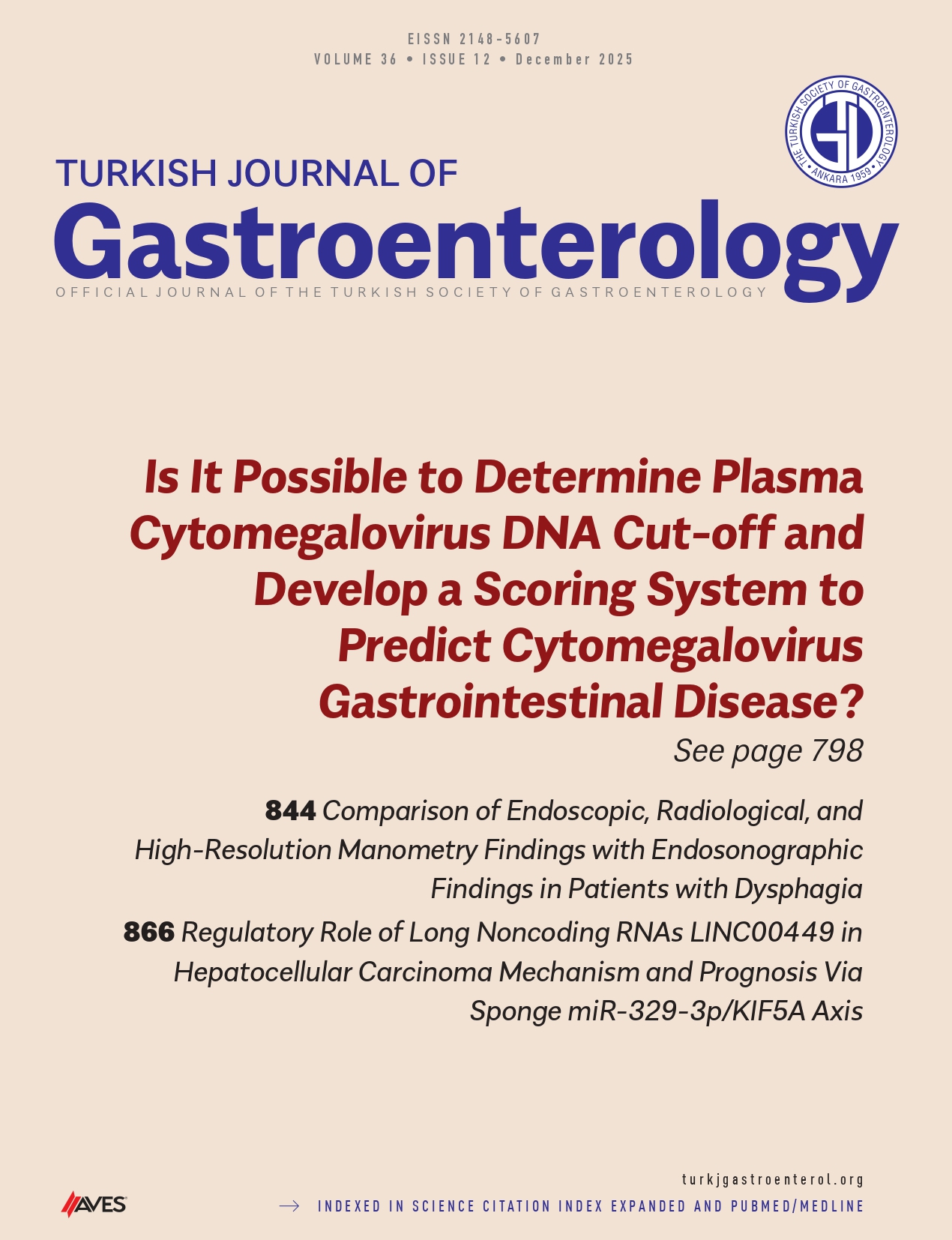Background/Aims: This study aimed to determine the predictors of endoscopic recurrence in a cohort of patients with Crohn’s disease (CD) with prior intestinal resections.
Materials and Methods: The charts of the patients with CD were reviewed in a retrospective manner. Eighty-three patients were eligible for the final analysis. Demographic features of these patients and time between resection and colonoscopy, presence of any macroscopic residual disease in the remnant intestine, and postoperative medications were noted. Rutgeerts score was used to define postoperative endoscopic recurrence.
Results: The patients’ mean age±SD at their final colonoscopy was 42.81±11.99 yr; and 37 of 83 patients (45%) were female. The mean follow-up time between resection and the final colonoscopy was 51.16±51.08 months. A total of 51 of 83 patients (61%) were in endoscopic remission (i0, i1); whereas 32 (39%) had an endoscopic recurrence (i2, i3, i4). History of multiple resections (χ2=6.12; p=0.013) and the presence of any postoperative residual disease in the remnant intestine (χ2=5.86; p=0.015) were risk factors; whereas the regular use of azathioprine (AZA) was significantly more common among patients without recurrence (χ2=4.515; p=0.034). In an age-sex adjusted Cox regression analysis history of multiple resections, presence of any postoperative residual disease proved to be independent risk factor for endoscopic recurrence, whereas the regular use of AZA proved to be ineffective.
Conclusion: In a retrospective long-term follow-up cohort of resected patients with CD, having multiple resections for CD and the presence of any residual synchronous disease after ileocolonic resection were identified as risk factors for endoscopic recurrence; the latter was never reported in previous studies.
Cite this article as: Erzin Y, Şişman G, Hatemi İ, et al. Predictors of endoscopic recurrence in resected patients with Crohn’s disease in a long-term follow-up cohort: History of multiple previous resections and residual synchronous disease in the remnant intestine. Turk J Gastroenterol 2020; 31(4): 282-8.




.png)
.png)